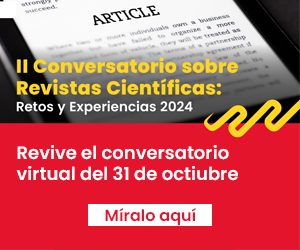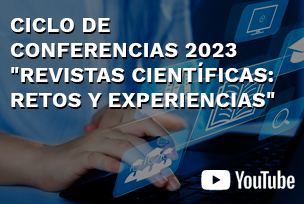Episodios psicóticos inducidos por ayahuasca: revisión sistemática a partir de un caso.
DOI:
https://doi.org/10.20453/rnp.v85i3.4331Palabras clave:
Banisteriopsis, N, N-Dimetiltriptamina, trastornos psicóticos afectivos, antipsicóticos, grupos de riesgo, terapéuticaResumen
La ayahuasca pertenece al grupo de alucinógenos de origen vegetal con los que comparte su capacidad de alterar el estado de conciencia y provocar alteraciones perceptivas. Empleada tradicionalmente en forma de brebaje en ritos ceremoniales con el propósito de alcanzar experiencias de contenido espiritual o sanatorio, su uso se ha extendido a lo largo de centurias hasta nuestro actual contexto cultural dentro del cual es empleada por pequeños grupos guiados por fines de crecimiento personal. La experiencia suele durar unas horas y los efectos suelen ser autolimitados. Se describe el caso clínico de una paciente que, tras el consumo experimental de ayahuasca, desarrolla un episodio maníaco con síntomas psicóticos. Se realiza asimismo una búsqueda sistemática de casos publicados de sintomatología psicótica relacionada con el consumo de ayahuasca. A nivel experimental, la relación entre ayahuasca y experiencias psicóticas es poco conocida, si bien se ha determinado un buen perfil de seguridad de la sustancia en administraciones puntuales en sujetos sanos. En el presente estudio, los resultados sugieren que la aparición de episodios psicóticos asociados con consumo de ayahuasca es un fenómeno infrecuente que parece estar relacionado con características de vulnerabilidad tales como historia personal o familiar de trastorno mental grave o el uso concomitante de otros compuestos tóxicos o drogas, especialmente cannabis.
Descargas
Citas
Bouso JC. Alucinógenos etnobotánicos. En: Martínez D, Pallarés J (editores). De riesgos y placeres. Lleida: Milenio; 2013. p. 351-369.
Montoro J. Historia de las drogas: desde la prehistoria a la actualidad. Madrid: Susaeta; 2015. p. 183-184.
Kuhn C, Swartzwelder S, Wilson W, Rea C. Colocados: lo que hay que saber sobre las drogas más consumidas, desde el alcohol hasta el éxtasis. Barcelona: Debate; 2011. p. 99.
Escohotado A. Aprendiendo de las drogas: usos y abusos prejuicios y desafíos. Barcelona: Anagrama; 2010. p. 224
Academia Mayor de la Lengua Quechua. Diccionario: quechua-español-quechua. Cusco, Perú: Academia Mayor de la Lengua Quechua; 2007. p. 36.
López A. Los alucinógenos. CSIC; 2017. p. 85-87.
Pereiro C, Fernández J. Guía de adicciones para especialistas en formación. Valencia: SOCIDROGALCOHOL; 2018. p. 309.
Schultes R, Hofman A. Plants of the Gods. Maidenhead: McGraw-Hill; 1979. p. 126
Bouso JC, González D, Fondevila S, Cutchet M, Fernández X, Ribeiro Barbosa PC, et al. Personality, psychopathology, life attitudes and neuropsychological performance among ritual users of ayahuasca: A longitudinal study. Mazza M, editor. PLoS ONE. 2012;7(8):e42421.
Elephantos.com. Online Smart Shop, Head Shop & Seed Shop. Elephantos.com; 2021
PRISMA. Welcome to the Preferred Reporting Items for Systematic Reviews and Meta-Analyses (PRISMA) website!PRISMA; 2021. (Citado el 15 de marzo del 2022) Disponible en: http://prisma-statement.org
Sami M, Piggott K, Coysh C, Fialho A. Psychosis, psychedelic substance misuse and head injury: A case report and 23 year follow-up. Brain Injury. 2015;29(11):1383–6.
Lima F, Naves M, Motta J, Migueli J, Brito G. Sistema de monitoramento psiquiátrico em usuários do chá hoasca. Braz J Psychiatry. 2002;24(suplemento 2):120–41.
Lima F, Tófoli L. An epidemiogical surveillance system by the UDV: Mental health recommendations concerning the religious use of hoasca. En: Labate B, Jungaberle H (Edit). The internationalization of ayahuasca. LIT VERLAG GmbH & Co. KG Wi; 2011.p. 185–200.
Gable RS. Risk assessment of ritual use of oral dimethyltryptamine (DMT) and harmala alkaloids. Addiction. 2007;102(1):24–34.
dos Santos RG, Bouso JC, Hallak JEC. Ayahuasca, dimethyltryptamine, and psychosis: a systematic review of human studies. Ther Adv Psychopharmacol. 2017;7(4):141–57.
dos Santos R, Strassman R. Chapter 7. Ayahuasca and psychosis. En: dos Santos R, Luna L, Goulart S, Riba J, ed. by. The ethnopharmacology of Ayahuasca. 1st ed. Barcelona: Transworld Research Network; 2011. p. 97-99.
Umut G, Küçükparlak İ, Özgen G, Türkcan A. Esrar Kullanımı Sırasında Başlayan ve N, N- Dimetiltriptamin (Dmt) Kullanımı ile Psikotik Özellikler Eklenen Duygudurum Bozukluğu: Bir Olgu Sunumu. Dusunen Adam: The Journal of Psychiatry and Neurological Sciences. 2011;24(3): 246-250.
Warren JM, Dham-Nayyar P, Alexander J. Recreational use of naturally occurring dimethyltryptamine – contributing to psychosis? Aust N Z J Psychiatry. 2012;47(4):398–9.
Paterson NE, Darby WC, Sandhu PS. N,N-dimethyltryptamine–induced psychosis. Clin Neuropharmacol. 2015;38(4):141–3.
Szmulewicz AG, Valerio MP, Smith JM. Switch to mania after ayahuasca consumption in a man with bipolar disorder: a case report. Int J Bipolar Disord. 2015;3:4. doi: 10.1186/s40345-014-0020-y
Brown T, Shao W, Ayub S, Chong D, Cornelius C. A physician’s attempt to self-medicate bipolar depression with N,N-dimethyltryptamine (DMT). J Psychoactive Drugs. 2017;49(4):294–6.
Neyra-Ontaneda D. Psicosis inducida por ayahuasca: reporte de un caso. Rev Neuropsiquiatr. 2017;80(4):265.
Bilhimer MH, Schult RF, Higgs KV, Wiegand TJ, Gorodetsky RM, Acquisto NM. Acute intoxication following dimethyltryptamine ingestion. Case Rep Emerg Med. 2018;2018:1–3.
Palma-Álvarez RF, Grau-López L, Ros-Cucurull E, Abad AC, Dualde J, Robles-Martínez M, et al. Psychosis induced by abuse of ayahuasca: a case report. Rev Colomb Psiquiatr. 2021;50(1):43–6.
Barbic D, Fernandes J, Eberdt C, Chakraborty A. N,N-Dimethyltryptamine: DMT-induced psychosis. Am J Emerg Med. 2020;38(9):1961.e1-1961.e2
Cohen S, Ditman K. Complications associated with lysergic acid diethylamide (LSD-25). JAMA. 1962;181:161-2. doi: 10.1001/jama.1962.03050280091013b
Smart R.G, Bateman K. Unfavourable reactions to LSD: a review and analysis of the available case reports. CMAJ. 1967;97(20):1214–21.
Strassman RJ. Adverse reactions to psychedelic drugs. A review of the literature. J Nerv Ment Dis. 1984 ;172(10):577-95. doi: 10.1097/00005053-198410000-00001
Johnson M, Richards W, Griffiths R. Human hallucinogen research: guidelines for safety. J Psychopharmacol. 2008;22(6):603-20. doi: 10.1177/0269881108093587
Klock JC, Boerner U, Becker CE. Coma, hyperthermia, and bleeding associated with massive LSD overdose: a report of eight cases. Clinical Toxicology. 1975;8(2):191–203.
Smith DE, Raswyck GE, Dickerson Davidson L. From Hofmann to the Haight Ashbury, and into the future: The past and potential of lysergic acid diethlyamide. J Psychoactive Drugs. 2014;46(1):3–10.
Johansen P-Ø, Krebs TS. Psychedelics not linked to mental health problems or suicidal behavior: A population study. J Psychopharmacol. 2015;29(3):270–9.
Vallersnes OM, Dines AM, Wood DM, Yates C, Heyerdahl F, Hovda KE, et al. Psychosis associated with acute recreational drug toxicity: a European case series. BMC Psychiatry. 2016 ;16:293. doi: 10.1186/s12888-016-1002-7
dos Santos RG, Balthazar FM, Bouso JC, Hallak JE. The current state of research on ayahuasca: A systematic review of human studies assessing psychiatric symptoms, neuropsychological functioning, and neuroimaging. J Psychopharmacol. 2016;30(12):1230–47.
Riba J, Rodríguez-Fornells A, Urbano G, Morte A, Antonijoan R, Montero M, et al. Subjective effects and tolerability of the South American psychoactive beverage Ayahuasca in healthy volunteers. Psychopharmacology. 2001;154(1):85-95.
Grob CS, McKenna DJ, Callaway JC, Brito GS, Neves ES, Oberlaender G, et al. Human Psychopharmacology of Hoasca, A Plant Hallucinogen Used in Ritual Context in Brazil. J Nerv Ment Dis. 1996;184(2):86–94.
Halpern JH, Sherwood AR, Hudson JI, Yurgelun-Todd D, Pope HG. Psychological and cognitive effects of long-term peyote use among native Americans. Biol Psychiatry. 2005;58(8):624–31.
Guimarães dos Santos R, Luna L, Goulart S, Bouso J, Riba J, de Lima Osorio F, et al. The ethnopharmacology of ayahuasca. Barcelona: Transworld Research Network; 2011.
Sanches RF, de Lima Osório F, dos Santos RG, Macedo LRH, Maia-de-Oliveira JP, Wichert-Ana L, et al. Antidepressant effects of a single dose of ayahuasca in patients with recurrent depression. J Clin Psychopharmacol. 2016;36(1):77–81.
Osório F de L, Sanches RF, Macedo LR, dos Santos RG, Maia-de-Oliveira JP, Wichert-Ana L, et al. Antidepressant effects of a single dose of ayahuasca in patients with recurrent depression: a preliminary report. Braz J Psychiatry. 2015;37(1):13–20.
Riba J. Human pharmacology of Ayahuasca. Bellaterra: Universitat Autònoma de Barcelona; 2004.
D’Souza D, Sewell R, Ranganathan M. Cannabis and psychosis/schizophrenia: human studies. Eur Arch Psychiatry Clin Neurosci. 2009;259(7):413-31. doi: 10.1007/s00406-009-0024-2
Silva M, Carlini E, Claussen U, Korte F. Lack of cross-tolerance in rats among 9-trans-tetrahydrocannabinol (THC), cannabis extract, mescaline and lysergic acid diethylamide (LSD-25). Psychopharmacologia. 1968;13(4):332-340.
Isbell H, Jasinski D. A comparison of LSD-25 with 9-trans-tetrahydrocannabinol (THC) and attempted cross tolerance between LSD and THC. Psychopharmacologia. 1969;14(2):115-123.
Nichols D. Hallucinogens. Pharmacology & Therapeutics. 2004;101(2):131-181.
Marconi A, Di Forti M, Lewis C, Murray R, Vassos E. Meta-analysis of the association between the level of cannabis use and risk of psychosis. Schizophr Bull. 2016;42(5):1262-1269.
Large M, Sharma S, Compton M, Slade T, Nielssen O. Cannabis use and earlier onset of psychosis. Arch Gen Psychiatry. 2011;68(6):555.
Riba J, McIlhenny E, Valle M, Bouso J, Barker S. Metabolism and disposition of N,N-dimethyltryptamine and harmala alkaloids after oral administration of ayahuasca. Drug Test Anal. 2012;4(7-8):610-616.
Strassman R, Qualls C, Berg L. Differential tolerance to biological and subjective effects of four closely spaced doses of N,N-dimethyltryptamine in humans. Biol Psychiatry. 1996;39(9):784-795.
Stahl S. Psicofarmacologia esencia de Stahl. Bases neurocientíficas y aplicaciones prácticas. Madrid: Aula Médica; 2014.
Valle M, Maqueda AE, Rabella M, Rodríguez-Pujadas A, Antonijoan RM, Romero S, et al. Inhibition of alpha oscillations through serotonin-2A receptor activation underlies the visual effects of ayahuasca in humans. Eur Neuropsychopharmacol. 2016 ;26(7):1161–75.
Kometer M, Schmidt A, Jäncke L, Vollenweider FX. Activation of serotonin 2A receptors underlies the psilocybin-induced effects on α oscillations, N170 visual-evoked potentials, and visual hallucinations. J Neurosci. 2013;33(25):10544–51.
dos Santos RG, Osório FL, Crippa JAS, Hallak JEC. Antidepressive and anxiolytic effects of ayahuasca: a systematic literature review of animal and human studies. Braz J Psychiatry. 2016;38(1):65–72.
Fábregas JM, González D, Fondevila S, Cutchet M, Fernández X, Barbosa PCR, et al. Assessment of addiction severity among ritual users of ayahuasca. Drug Alcohol Depend. 2010;111(3):257–61.
Morgenstern J, Langenbucher J, Labouvie E. The generalizability of the dependence syndrome across substances: an examination of some properties of the proposed DSM-IV dependence criteria. Addiction. 1994;89(9):1105–13.
Jacob MS, Presti DE. Endogenous psychoactive tryptamines reconsidered: an anxiolytic role for dimethyltryptamine. Med Hypotheses. 2005;64(5):930–7.
Hamill J, Hallak J, Dursun SM, Baker G. Ayahuasca: Psychological and physiologic effects, pharmacology and potential uses in addiction and mental illness. Curr Neuropharmacol. 2019;17(2):108–28.
















